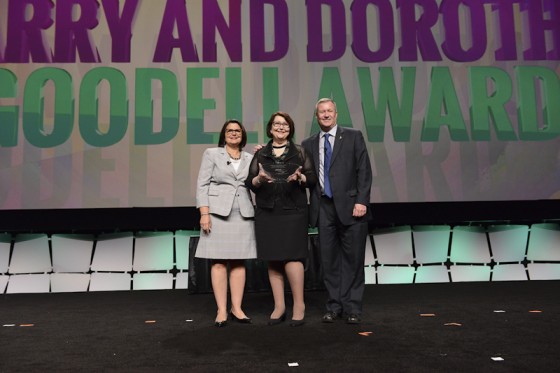While most risk professionals are satisfied with their insurers and brokers, those from of organizations with enterprise risk management (ERM) programs were the least content, according to the inaugural J.D. Power and Risk and Insurance Management Society (RIMS) 2014 Large Commercial Insurance Report.
The full report, based on findings of the J.D. Power 2014 Large Business Commercial Study, slated for release in February 2015, examines industry-level performance metrics among large business commercial insurers and brokers.
The study, which interviewed almost 1,000 risk professionals, highlights best practices that are critical to satisfying them.
The 2014 Commercial Insurance Report is based on surveys of organizations with $100 million or more in annual revenue that have purchased a commercial property, workers’ compensation, or auto policy with a profiled insurer or broker. The report represents organizations from more than 20 industry sectors and provides comparisons of the nine largest industry segments:
- Accommodations, Food Services, Arts, Entertainment, Retail, and Recreation
- Administrative Services, Education, and Real Estate
- Financial Services
- Government
- Information Technology, Professional, Scientific, and Technical Services
- Healthcare and Social Assistance
- Manufacturing and Wholesale Trade
- Telecom and Utilities
- Transportation, Warehousing, and Waste Management
ERM is steadily becoming a more prevalent function for risk management at many organizations—with nearly 40% of risk professionals indicating that ERM falls within their area of responsibility—but the survey found that risk professionals who are not responsible for their organization’s ERM function are generally more satisfied with their insurers and broker than those who are. In fact, overall satisfaction is lowest among risk professionals responsible for their organization’s enterprise risk management.
“A slice in the data showed that any time they might have any particular role in ERM, the satisfaction levels for those that did not have an ERM role was much higher than those who did,” said Timothy Bebout, commercial insurance practice leader at J.D. Power. “Their interaction and their satisfaction with either the broker or the insurer, whether by product line or by particular key indicators, was lower.”
Why was this the case? “The study shows there is more expectation for ERM from a strategic role in companies,” Bebout continued. “Some of the risks are not easily quantifiable and if tied to the need for reliance upon a broker to understand their business, I can imagine that if the risk professional was having difficulty describing or quantifying the risk and the broker was unable to take any sort of action, that would be viewed as a lack of knowledge of their needs.”
The brokers that did well did so because “they clearly understood the risk professional’s business and how to prepare for that renewal, or perhaps a new business proposal to an underwriter. They understood the key things that would make a difference in terms of pricing, limits and specific coverages and deductibles,” Bebout said. As for their communications, “If the average broker interaction outside of a claim is one or two times, risk professionals are saying that is not enough.”
Satisfaction with insurance brokers was based on four factors: ease of contacting, reasonableness of fees, advice and guidance in selecting program offerings and timeliness of resolving contact.
The survey found that overall satisfaction was highest for brokers. This was followed by property insurers, auto and workers compensation. Risk management customers of large commercial insurers were significantly more satisfied with their commercial property, workers compensation and auto insurance providers based on five factors: interaction, program offerings, price, billing and payment and claims.
Billing and payment was found to be the lowest scoring factor in the areas of auto and workers compensation, and among the lowest scoring in the property index. However, billing and payment satisfaction was significantly lower among workers compensation customers than among property and auto customers.
Mary Roth, RIMS executive director noted, “Whether the results of the survey were surprising or expected, we hope that it encourages a meaningful dialogue and actionable performance initiatives.
The primary objective is to foster improved customer satisfaction throughout the large commercial insurance industry.”
The 146-page, J.D. Power and RIMS Commercial Insurance Report is available for purchase by clicking here. RIMS members can receive the 13-page J.D. Power and RIMS Commercial Insurance—Special Report Snapshot for free as well as a discount on the full report.





